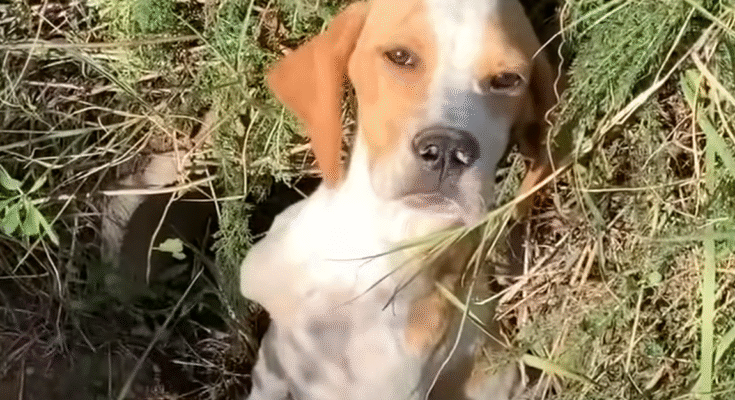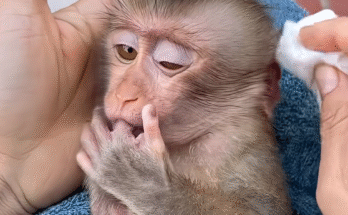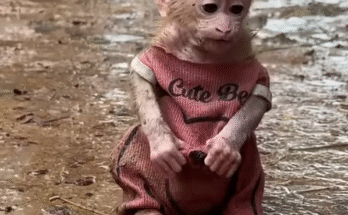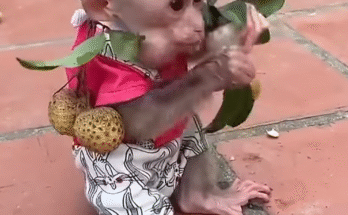
In the world of animal rescue, few stories are as heart-wrenching and heartwarming as the tale of a lonely, abandoned puppy. The sight of a tiny, helpless creature left to fend for itself evokes deep empathy, and the journey from despair to recovery is a testament to the power of compassion, patience, and human kindness. This story chronicles the rescue, recovery, and adoption of an abandoned lonely puppy, highlighting the challenges, emotional moments, and ultimate joy of giving a vulnerable life a second chance.
The Discovery
It all began on a quiet morning, walking through a neglected alleyway at the edge of town. Amid discarded trash and broken crates, a small whimper caught my attention. At first, I thought it was stray sounds echoing from the surroundings, but the soft, persistent cries drew me closer. There, huddled behind an old cardboard box, was a tiny puppy — no more than a few weeks old, trembling and alone.
The puppy’s condition was immediately concerning. Its fur was dirty and matted, its body thin from lack of proper nutrition, and its eyes wide with fear and confusion. Every sound, movement, or shadow seemed to amplify its anxiety. The puppy’s cries were not just calls for food, but desperate pleas for comfort, safety, and protection.
It was clear: this small, abandoned life would not survive long without intervention. Immediate action was required to ensure its survival.
Assessing the Situation
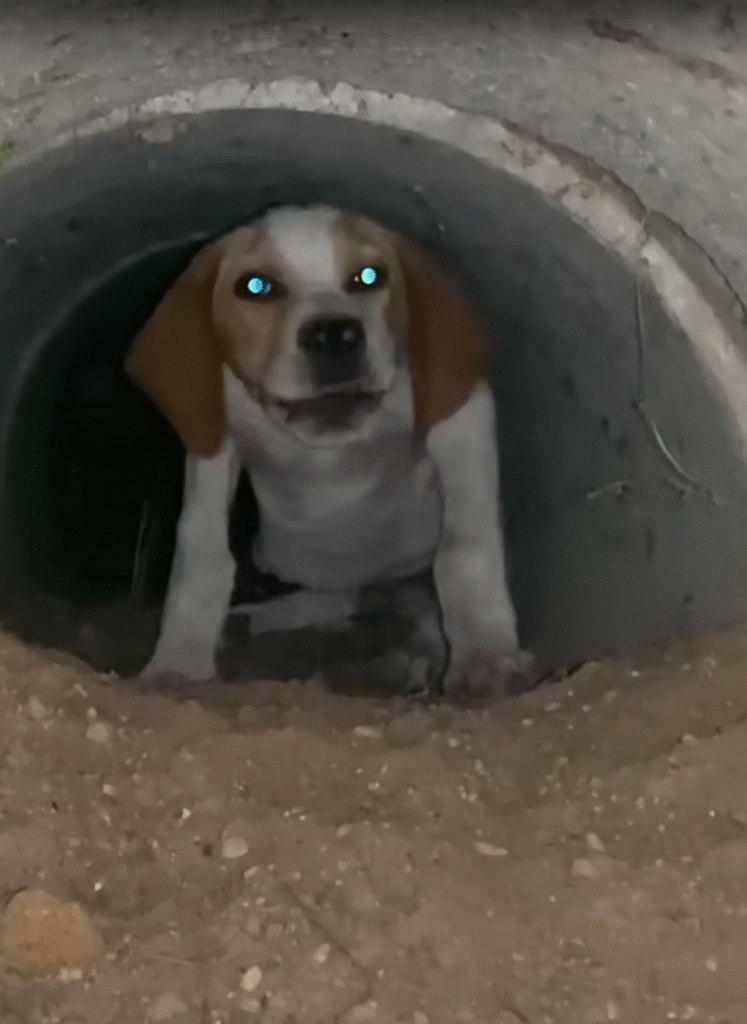
Before attempting rescue, it was important to evaluate the puppy’s health and the surrounding environment. The alley was unsafe, filled with sharp objects, trash, and potential hazards. The puppy was alone, with no mother in sight. Signs of dehydration and hunger were apparent — the small body was trembling, not just from cold, but from weakness.
In such cases, rescuers must act with care. Sudden movements or loud noises could startle the puppy, causing further distress or injury. Patience was essential. The approach had to be slow, calm, and reassuring, signaling to the puppy that it was not in danger and that help was near.
The Rescue
The rescue process began with cautious steps. I knelt down, speaking softly and extending my hand gently toward the puppy. Initially, it backed away, fearful and uncertain, its tiny body curling into a protective ball. Such reactions are natural; abandonment often instills a deep mistrust of humans.
To gain its trust, I used a combination of calm voice, slow movements, and food enticement. A small piece of bread was placed nearby, and the puppy, guided by hunger and curiosity, inched closer. Eventually, with patience, the puppy allowed me to scoop it into my hands. Its body trembled against mine, both from fear and from the cold, but there was also a sense of relief — a recognition that help had arrived.
Wrapped in a soft towel, the puppy was carried to a safe, warm environment. This first act of rescue marked the beginning of a long journey toward recovery.
Immediate Care and Recovery
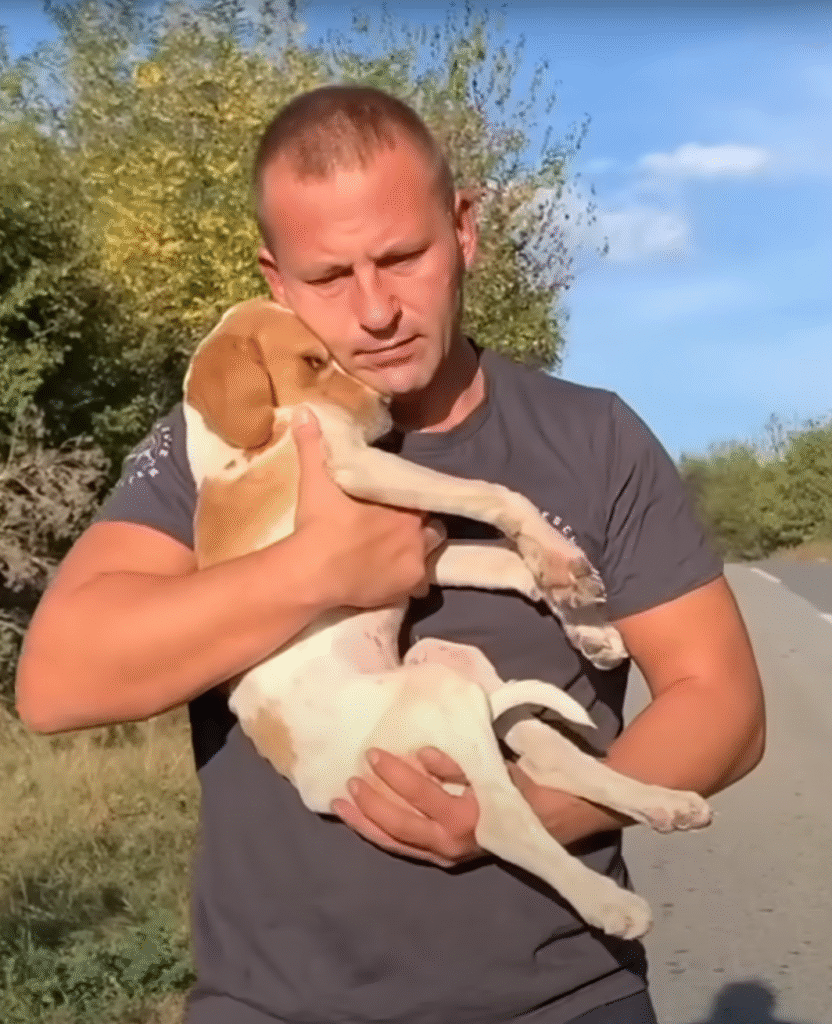
Once in a safe space, the focus shifted to care and stabilization. The puppy’s frail body required warmth, nourishment, and medical attention.
- Warmth: A heat pad and soft blankets provided immediate relief from the cold, helping regulate its body temperature.
- Nutrition: The puppy was fed small, frequent meals to prevent digestive upset. Formula specifically designed for young puppies ensured it received essential nutrients.
- Medical Assessment: A veterinarian checked for dehydration, infections, parasites, and any underlying health issues. Vaccinations and preventive care were scheduled to ensure long-term health.
During this stage, the puppy’s trust began to grow. Gentle strokes, calm words, and consistent care helped it understand that humans could be a source of safety and comfort. Its initial cries softened into contented whimpers, and occasional tail wags signaled tentative happiness.
Emotional and Behavioral Healing
Abandonment often leaves deep emotional scars. Lonely puppies may exhibit fear, anxiety, or distrust long after physical needs are met. Recovery is not only about physical healing but also about addressing emotional trauma.
- Bonding Time: Spending hours sitting with the puppy, speaking softly, and allowing it to explore its new environment at its own pace was crucial. These moments built trust and emotional security.
- Play and Stimulation: Toys, gentle interaction, and supervised exploration provided mental stimulation, helping the puppy regain confidence and curiosity.
- Socialization: Gradual exposure to humans, sounds, and other safe animals helped reduce anxiety and prepare the puppy for future interactions and adoption.
Every small milestone — a wagging tail, playful nips, or a relaxed nap in a human’s lap — marked significant progress in the puppy’s emotional recovery.
Preparing for Adoption
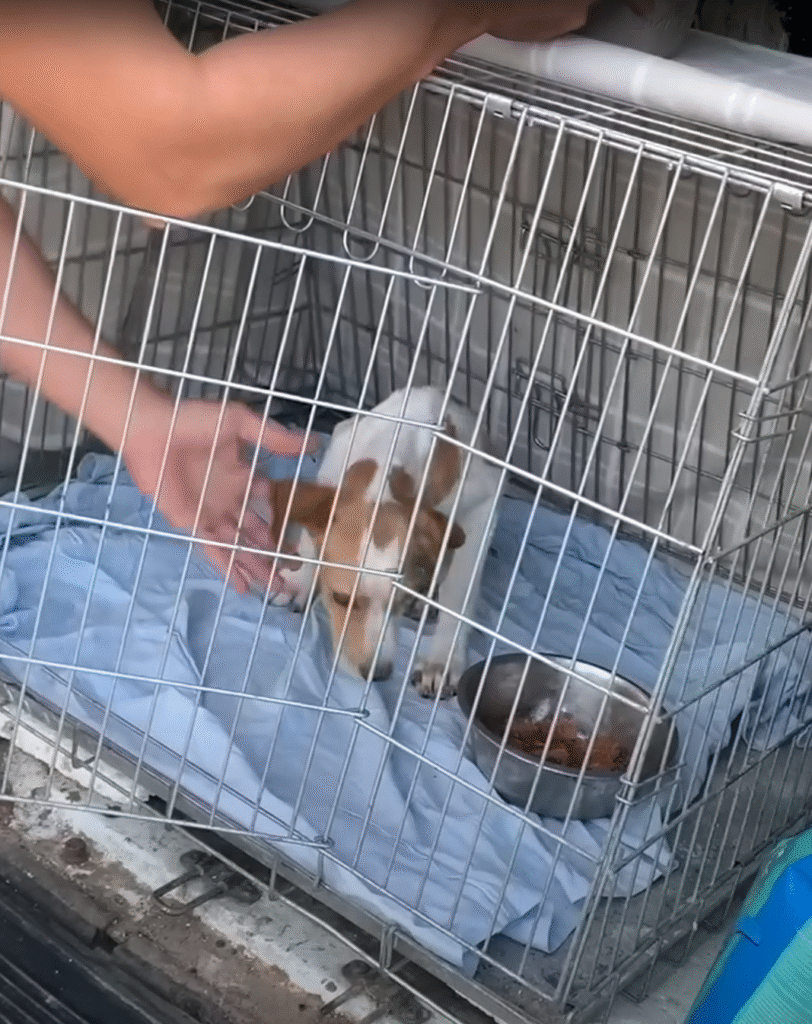
Once the puppy was physically healthy and emotionally stable, the next step was finding a permanent, loving home. Adoption is the final, vital stage in the rescue journey, ensuring that the puppy continues to thrive in a nurturing environment.
- Screening Potential Families: Families were assessed for their ability to provide care, attention, and love. A good match ensures the puppy’s needs are met for life.
- Education and Guidance: Adopters received guidance on feeding schedules, training, socialization, and healthcare. This ensures a smooth transition from rescue to home life.
- Transition Period: A gradual introduction to the new home environment helps reduce stress and supports adjustment to new routines, sounds, and spaces.
The Joy of Adoption
The day of adoption was both emotional and joyous. Seeing the lonely, abandoned puppy finally find a loving family brought immense satisfaction. The transformation was remarkable: from trembling, fearful cries to excited tail wags and curious exploration of its new home.
Adopters reported that the puppy quickly adapted, bonding closely with family members and displaying playful, affectionate behavior. The journey from abandonment to love demonstrated the resilience and adaptability of rescued animals.
Lessons Learned
The rescue, recovery, and adoption of an abandoned lonely puppy provide valuable lessons:
- Every Life Matters: Even the smallest, most vulnerable creatures deserve care, attention, and a chance to thrive.
- Patience is Key: Recovery requires time, gentle care, and consistency. Trust cannot be rushed.
- Comprehensive Care: Physical health, emotional support, and socialization are all essential for successful recovery.
- Human Responsibility: Community awareness, intervention, and advocacy are crucial to prevent abandonment and ensure animal welfare.
- Resilience and Hope: Despite trauma, animals possess remarkable resilience and the ability to form bonds when treated with kindness.
Reflection
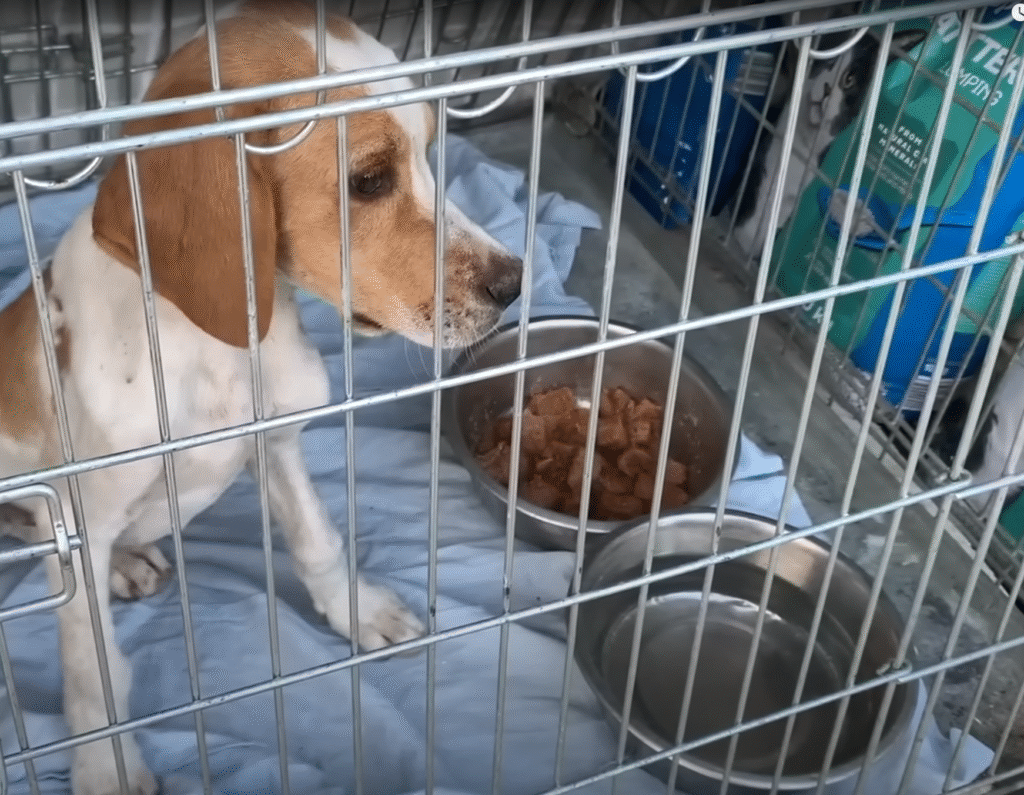
This experience was both humbling and inspiring. Witnessing the puppy’s journey from abandonment to adoption highlighted the profound impact humans can have on the lives of animals. Small acts of compassion — a warm hand, a meal, gentle words — can transform fear into trust, loneliness into love, and vulnerability into joy.
The abandoned puppy’s story is not just about rescue; it is about hope, second chances, and the enduring connection between humans and animals. Each milestone in its recovery was a testament to the power of empathy and the importance of giving every living being a chance at life and happiness.
Conclusion
The story of the abandoned lonely puppy underscores the critical importance of rescue efforts, compassionate care, and thoughtful adoption. From the moment of discovery, through careful recovery, to the joyful day of adoption, the journey reflects the challenges, rewards, and transformative power of animal rescue.
By rescuing, nurturing, and ultimately finding a permanent home for the puppy, its life was completely transformed. What began as a fragile, frightened, and abandoned creature became a happy, confident, and loved companion. This journey serves as a powerful reminder of the impact of kindness, the resilience of animals, and the fulfillment that comes from giving a second chance to those who cannot help themselves.
Through acts of compassion, patience, and love, abandoned and lonely animals can not only survive but thrive — leaving lasting impressions on the lives of those who help them along the way.
